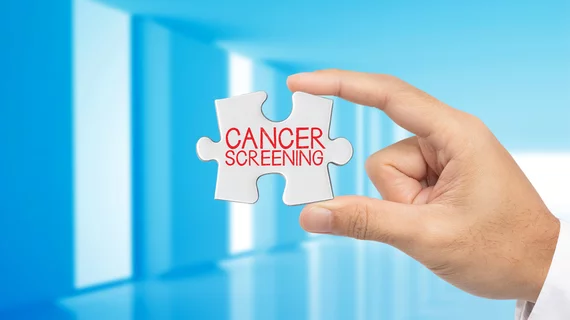America’s cancer burden is shifting from men to women
The country’s cancer burden is shifting from men to women, according to new data from the American Cancer Society.
Incidence rates among women 50 to 64 have now surpassed those of men, while cancer rates for females under 50 are 82% higher than their male counterparts. That’s compared to about 51% higher as of 2002, the nation’s leading cancer-fighting organization said Jan. 16.
While these numbers are concerning, American healthcare providers have recorded progress in their fight against cancer. Mortality rates declined by approximately 34% between 1991 and 2022 in the U.S., avoiding about 4.5 million deaths. The findings are from the society’s annual report on cancer, published in CA: A Cancer Journal for Clinicians.
“Continued reductions in cancer mortality because of drops in smoking, better treatment and earlier detection is certainly great news,” lead author Rebecca Siegel, MPH, senior scientific director of surveillance research at the ACS, said in a statement. “However, this progress is tempered by rising incidence in young and middle-aged women, who are often the family caregivers, and a shifting cancer burden from men to women, harkening back to the early 1900s when cancer was more common in women.”
The U.S. will see about 2,041,910 new cancer diagnoses in 2025 (or 5,600 per day) and 618,120 deaths. Siegel and colleagues highlighted “lagging” progress in addressing pancreatic cancer, the country’s third leading cancer killer. Incidence and mortality rates have climbed, with a five-year survival rate of 8% for 9 out of 10 Americans diagnosed with pancreatic exocrine tumors. Incidence rates also are climbing for common cancers of the breast (female), pancreas, uterine corpus, melanoma (female), liver (female), disease associated with the human papillomavirus, and pancreas. The latter saw the steepest uptick at 3% per year between 2014 to 2021. Meanwhile, death rates are increasing for cancers of the oral cavity, pancreas, uterine corpus, and liver (female).
The rate of new diagnoses of colorectal cancer in men and women younger than 65 increased, too, and same for cervical cancer among those ages 30 to 44. Siegel and c0-authors highlighted “alarming” inequalities in mortality, including death rates 2 to 3 times higher among Native Americans compared to their white counterparts for cancers of the kidney, liver, stomach and cervix. Black Americans are twice as likely to die of prostate, stomach, and uterine corpus cancers compared to their white peers and 50% likelier to die of cervical cancer.
Experts highlighted the importance of bolstering funding for screening programs and research to better understand why the disease burden is shifting toward women and minority populations.
“This report underscores the need to increase investment in both cancer treatment and care, including equitable screening programs, especially for underserved groups of patients and survivors,” Wayne A. I. Frederick, MD, MBA, interim CEO of the American Cancer Society, said in the same announcement. “Screening programs are a critical component of early detection, and expanding access to these services will save countless lives. We also must address these shifts in cancer incidence, mainly among women. A concerted effort between healthcare providers, policymakers and communities needs to be prioritized to assess where and why mortality rates are rising.”

